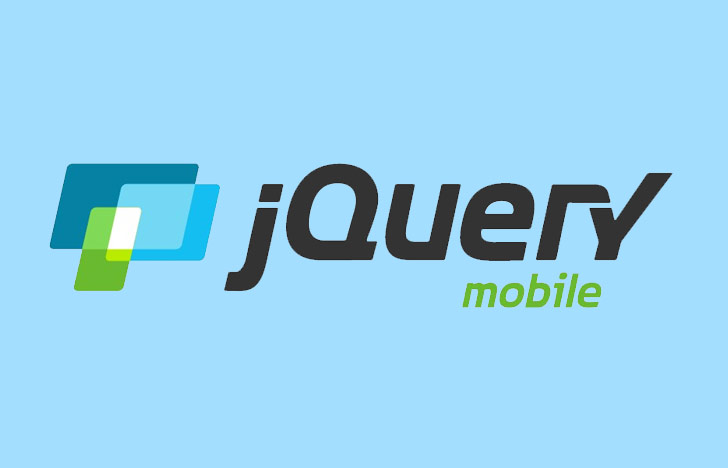Top UI Frameworks for Best Hybrid App Design based on CSS, JS and HTML
Developing robust mobile applications with native look and feel has become a cakewalk these days. Yeah, You have heard it right!! With the emergence of so many HTML5 mobile UI frameworks, you can easily create massive applications which have their own dynamics and functionalities to be a forerunner. For creating user-specific mobile apps, HTML5 provides mobile app frameworks which are designed to deliver an unmatched experience to the users. Let’s explore each one of them in detail.

jQuery Mobile
A powerful, robust and convincing JavaScript framework which is optimized for touch-enabled devices, JavaScript allows developers to create a mobile version of a site. JQM has a library which leverages CSS3 and HTML5 web standards to design mobile web apps with a native experience. It applies HTML5 data-role attributes within the existing template optimized for a mobile-enabled website which does not require the creation of a mobile version separately. One of the advantages of JQM is the ease of use and simplicity in converting existing content formatted for a mobile browser. This framework addresses the problem of user experience and provides touch-optimized interface elements for multiple mobile platforms. jQuery empowers developers to build mobile apps that run seamlessly with the unique user experience across tablets, desktops, and mobiles.
Sencha Touch
Blended together with HTML5 and CSS3, Sencha Touch designs interactive applications that users can run perfectly on devices supported by Android, iOS, and BlackBerry. An additional advantage of Sencha Touch is that it offers GUI based controls which further simplify using the mobile web application. Made for designing enterprise level web applications with HTML5 and JavaScript, Sencha Touch provides animations, API’s and components which are compatible with the latest mobile platforms and browsers.
Ionic
Ionic is an HTML5 mobile framework which is strictly focused on app performance. It is a powerful, open-source, front-end application which features a great user interface to design the mobile apps with a set of exclusive features. Being a front-end software development kit, Ionic facilitates building cross-platform apps with services as analytics and push notifications integrated. The JavaScript portions of these apps are built using Angular JS. Angular extends HTML with its UI component and directives. Some of the key advantages of designing apps with UI framework are-
- Performance obsessed and native-focused
- Multi-device resolution with browser compatibility
- Reduces cognitive overhead
- Buttery-smooth scrolling views
- Develop once, deploy anywhere
Mobile Angular UI
With Mobile Angular UI, you get the features in a combination of Bootstrap 3 and Angular framework to build HTML5 mobile applications. This framework provides directives for building UI components like switches, sidebars, scrollable areas, and positioned navbars. These are the components you will find missing in Bootstrap 3. An open-source and free to use framework, Mobile Angular UI uses some of the powerful and reliable libraries, like fastclick.js and overthrow.js to render smooth and convenient browsing across all platforms.
PhoneGap
PhoneGap is an HTML5 based framework that lets mobile app developers build native apps with the use of CSS3, JavaScript, and HTML5. The best part of PhoneGap is that it can be used in collaboration with other frameworks to support them with the features they lack and PhoneGap provides. Requested by most of the developers, PhoneGap has become a popular framework for designing enterprise level applications along with Sencha. It helps in the creation of a functional native application that runs easily on a slew of browsers and devices including Android, iOS, BlackBerry, Symbian, Windows 8, Windows Phone, and more. PhoneGap consists of Apache Cordova as an underlying software.
Appcelerator Titanium
The framework is based on eminent web technologies to design mobile applications that leverage some of the important features like-
- Social media sharing support along with instant sharing and quick access to notifications and mails
- Complete access to all camera functions
- Full support for HTML5 and CSS3 as a complete authoring environment
- Location-based services and compass can be used
- Customizable integrated analysis to keep track of website’s performance
- Compatibility metrics for tracking actions and for compatibility test assessment
- With Appcelerator Titanium, one has the power to work on the ideas and create what they like and require
With Appcelerator, one can avail superb music features and photo editing tools. Additionally, the framework has a flexible storage system which makes use of user preferences and overall extensibility.
Closing Words-
The “write once and run everywhere” approach has made Hybrid apps a great choice to code for various mobile platforms including iOS, Android, and Windows. In the fast changing mobile app development world, the top mentioned UI frameworks help hasten the development process. All the aforementioned app frameworks do serve the purpose and offer an incredible viewing experience to all those using it.
Author- Bio
The post is penned down by Nola Arney who carries a zeal to share information, write and learn about modern mobile apps, web apps, websites and hybrid app development. As an app developer at HTMLPanda, her job profile includes working on the latest technologies to design the apps that offer enhanced viewing experience.
This blog post was written by a guest author/contributor. If you would like to write or submit a guest post for citec.in/blog, please write us at info[at]citec.in


